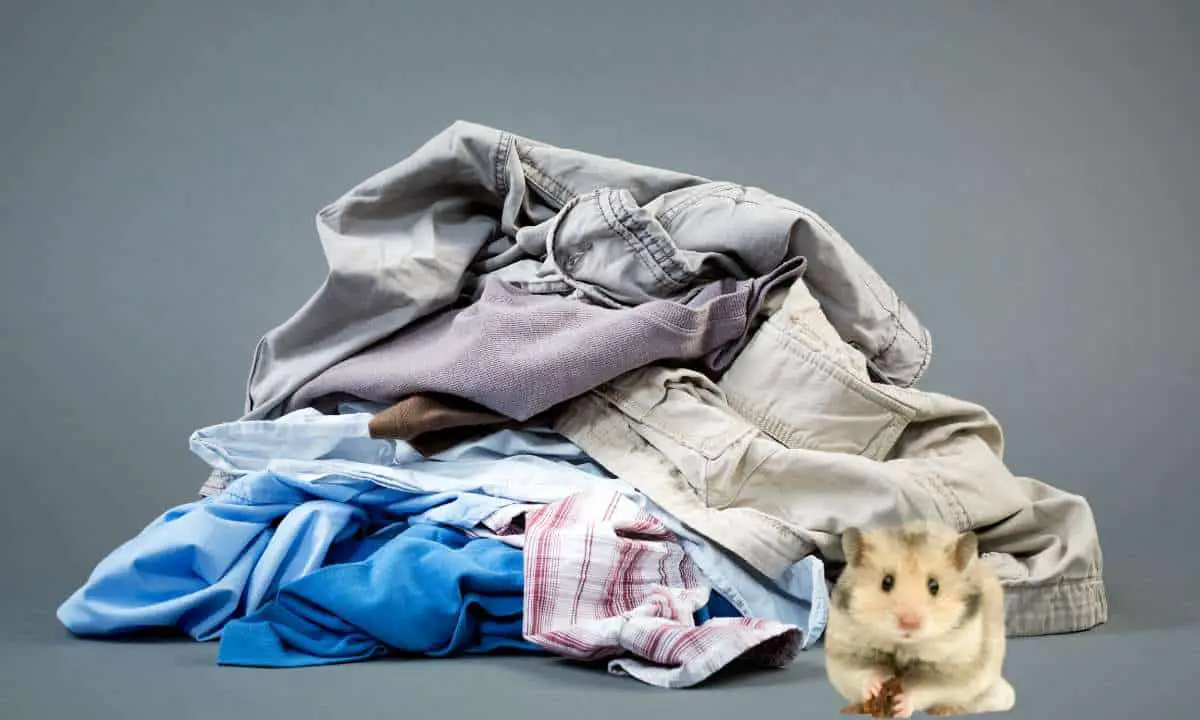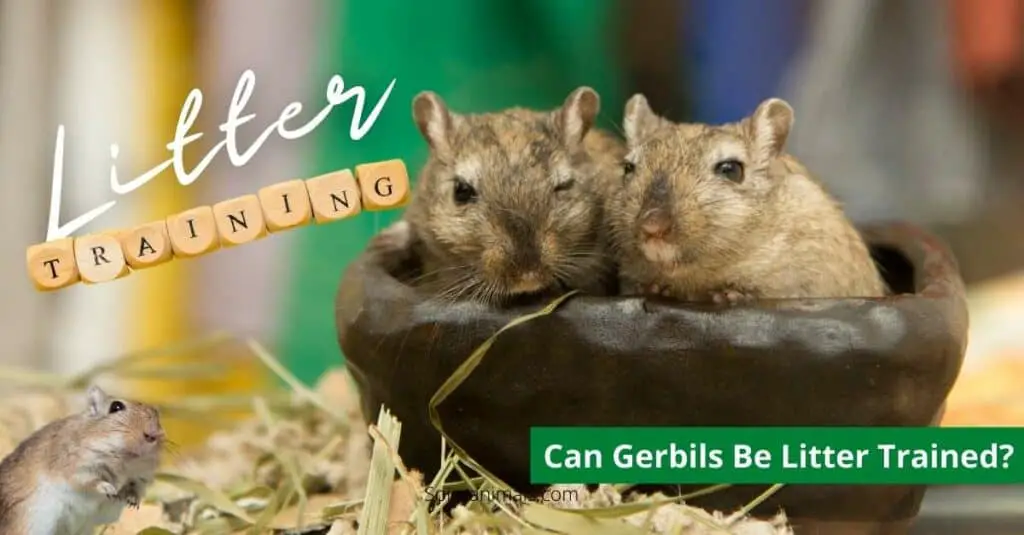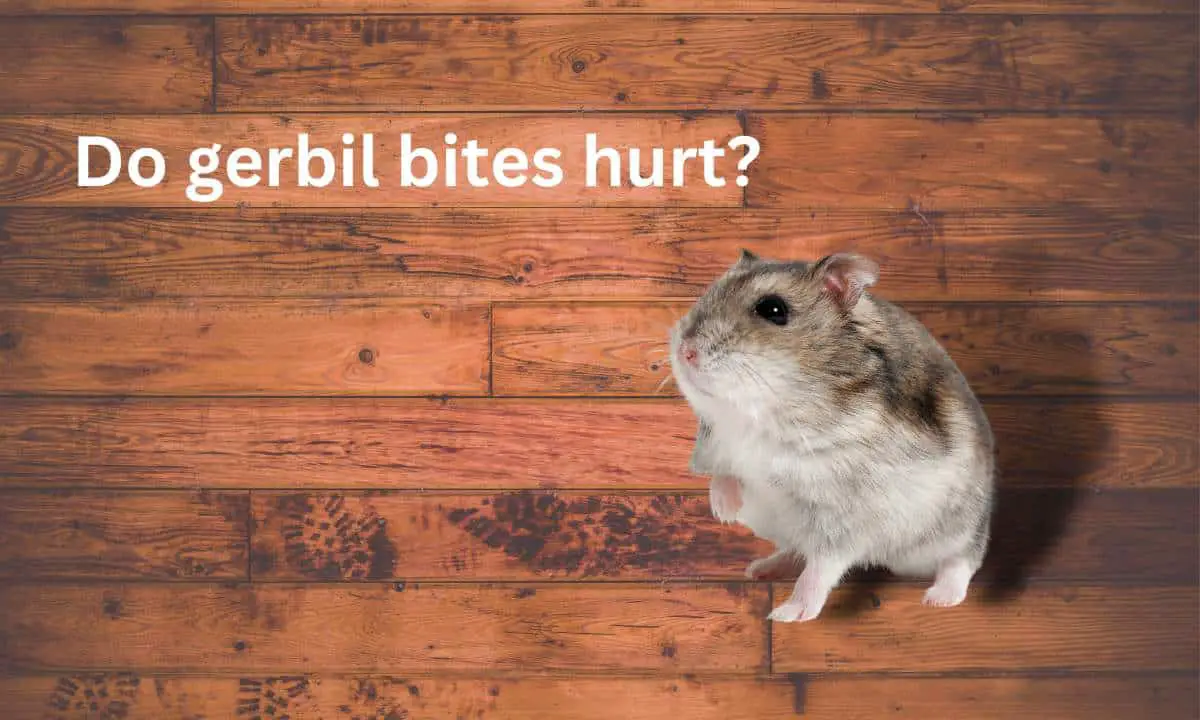Gerbils make great pets and can bring lots of joy into any home. They may hide for different reasons such as fear, injury, or illness, or because they want some alone time.
If your gerbil goes missing it is important to act quickly and use food as bait by placing treats near potential hiding spots. You should also search thoroughly in all the places where your gerbil usually hides.
Gerbils are small, fast, and excellent at hiding. They can easily crawl into the many hiding places found in a standard house or apartment, making them challenging to capture. Gerbils seek warmth, darkness, and safety, and will hide in various places like inside walls, behind and under furniture, and even in clothes that they can burrow into.
Table of Contents
How Do Gerbils Escape?
Gerbils can be very adept at escaping, especially from small cages and aquariums. They can squeeze through openings that are much smaller than their bodies, squeeze between bars of cages or dig their way out of enclosures with a dirt floors. To prevent gerbils from escaping it is best to keep them in an enclosure with secure lids or covers and firmly secure the doors and latches. You should also check regularly for any signs of possible escape routes such as holes or gaps in the enclosure.

Where Do Gerbils Like To Hide?
Gerbils are natural hoarders, so they like to hide in places where they can find food, shelter, and other items. They usually prefer dark, warm spots and often try to burrow beneath furniture or within walls. Common hiding spots for gerbils include behind furniture, kitchen cupboards, walls, clothes piles, and even plastic pipes or wood. Gerbils also tend to store their food in secluded areas such as beneath the sofa or inside a hole in the wall. To ensure your gerbil is safe, it’s important to check these locations when you suspect your pet has escaped its cage.
Why are Gerbils Trying to Escape?
Gerbils are naturally curious and active animals, which is why they often try to escape their enclosures. This behavior is usually caused by boredom or a lack of stimulation. Gerbils need plenty of space to explore and play, as well as hiding places and toys to keep them entertained. If their environment doesn’t provide enough mental and physical stimulation, gerbils will become restless and attempt to escape in search of more interesting things to do.
In the wild, gerbils live in large groups with plenty of room to roam around and explore. They also have access to a variety of food sources that can be found in their natural habitat. In captivity, however, gerbils are confined to small cages with limited space for exploration and activity. Without proper enrichment, gerbils may become bored or frustrated, leading them to try and escape from their enclosure in search of something more stimulating.
Gerbil owners should take steps to ensure that their pet has an environment that meets its needs for exploration and entertainment. Providing plenty of toys, hiding places, tunnels, chew sticks, exercise wheels, and other forms of enrichment can help keep your gerbil occupied and prevent it from trying to escape its enclosure. Additionally, make sure your gerbil’s cage is secure so that it cannot get out if it does try to escape.
Overall, gerbils are intelligent creatures that need plenty of stimulation in order to stay happy and healthy. By providing your pet with an enriching environment full of toys and activities, you can help prevent it from trying to escape its enclosure in search of something more exciting.
How To Find An Escaped Gerbil
If you have a gerbil that has escaped, don’t panic! It’s important to take the right steps in order to find your pet. Here are some tips on how to find an escaped gerbil:
- Look for hoarded food. Gerbils like to store food away in their hiding places, so look around for any signs of food that may have been stashed away.
- Search for gerbil droppings. Gerbils leave behind small pellets of droppings which can help you track them down if they’ve gone missing.
- Check plastic pipes and wood. Gerbils love to hide in tight spaces, so check any plastic pipes or wood around your home as they may be using these as hiding spots.
- Inspect floors for holes. If your gerbil has managed to escape, it’s likely that they’ve dug a hole somewhere in the floor or walls of your home – make sure you inspect these areas thoroughly!
- Search for nesting materials. Gerbils will often build nests out of shredded paper or cloth, so keep an eye out for any signs of nesting materials that may have been left behind by your pet.
- Watch your pets. If you have other animals at home, such as cats or dogs, keep an eye on them as they may be able to lead you to where the gerbil is hiding!
Finding an escaped gerbil can be tricky but with patience and persistence, it is possible! Make sure you check all the potential hiding spots and use these tips to help guide you in finding your beloved pet!
How To Catch An Escaped Gerbil
If your gerbil has escaped, catching it can be a challenge. Fortunately, there are several methods you can use to catch a gerbil.
The first step is to make sure that the gerbil has gone missing and not somewhere tucked away in the cage, because it may hide somewhere, it may be just difficult to find. Then make sure any other pets in the house are safely confined so they don’t interfere with the process of catching the gerbil.
One of the easiest ways to catch an escaped gerbil is to use a net or box. If your pet gerbil doesn’t come when you call it, try cornering it and then using a net or box to capture it. You can also use a humane trap, which will allow you to catch the gerbil without hurting it.
Another option is to create a bucket trap. This involves placing a container with some food inside near where you think your gerbil could be hiding and waiting for it to enter the container. Once inside, you can easily close the lid and retrieve your pet.
Finally, if all else fails, try luring the missing gerbil back with some bait such as seeds or nuts. Place some of these treats near where you think your pet may have gone and wait for them to come back on their own terms.
No matter which method you choose, always remember that safety should be your top priority when trying to catch an escaped gerbil!
| Takeaways: How To Catch An Escaped Gerbil |
|---|
| 1. Make sure your gerbil has escaped and not just hiding in the cage. Confine other pets in the house. |
| 2. Use a net or box to catch your gerbil. A humane trap can also be used. |
| 3. Create a bucket trap by placing food inside and waiting for your gerbil to enter. Lure your gerbil back with treats such as seeds or nuts if all else fails. |
| 4. Remember to prioritize safety when attempting to catch your escaped gerbil. |
Locating the Gerbil
If you have a gerbil that has escaped its cage or is hiding in your home, it can be difficult to locate. Gerbils are small and fast, so they can hide in hard-to-reach places. Here are some tips for locating your gerbil:
- Check all of the usual hiding spots like behind furniture, under appliances, and inside cabinets.
- Look for signs of activity such as gnawed wires or chewed cardboard boxes.
- Put out food and water in areas where you suspect the gerbil may be hiding.
- Place a towel or blanket on the floor near the suspected hiding spot to muffle noise and make it easier to spot movement.
- Check the clothes on the floor, piles of clothes are places that gerbils like to gravitate to lots of time.
- Use a flashlight to look into dark corners and crevices to find your gerbil, these are often forgotten as places a gerbil could hide
Once you’ve located your gerbil, you’ll need to figure out how to get them back into its cage safely.
Luring a Found Gerbil To Your Hand
Gerbils are naturally curious creatures, so it’s possible to lure them onto your hand with food or treats. Here are some tips for luring a found gerbil onto your hand:
- Offer small pieces of food like seeds or nuts as an incentive for the gerbil and see if it comes closer.
- Move slowly and calmly so as not to startle the gerbil.
- Hold out your hand with the food on it and wait for the gerbil to come closer.
- Once the gerbil is close enough, gently scoop them up with both hands and place them in their cage or container.
Trapping a Hiding Gerbil Safely
If luring doesn’t work, you may need to set up a trap in order to capture your runaway gerbil safely. Here are some tips for trapping a hiding gerbil:
- Place an open container filled with bedding material near where you think the gerbil is hiding.
- Place food at one end of the container as bait for the gerbil.
- Cover most of the container with something opaque like cardboard so that only one end is exposed.
This will make it easier for the gerbil to enter the container. Once the gerbil is inside, carefully close the lid and transport it back to its cage. Finding an escaped gerbil can be a challenge, but with patience and persistence, it is possible! Make sure you check all the potential hiding spots and use these tips to help guide you in finding your pet. Good luck!
Preventing Future Escapes
Gerbils are small and active animals, so it’s important to take the necessary steps to prevent the gerbil from escaping. The first step is to understand gerbil behavior and needs.
Gerbils are social animals who enjoy the company of their pet parent and other gerbils. They need a home that’s safe, secure, and hazard-free, with enough space for them to burrow and explore. A good rule of thumb is to provide at least 6 inches of the substrate such as Megazorb, Ecopetbed, Carefresh, or BedExcel for them to dig in. Sawdust should be avoided as it can cause respiratory problems in gerbils.
It’s also important to make sure all potential escape routes are blocked off – this includes any gaps between the cage bars or lid, as well as any holes in the floor or walls of your home. If you’re using an aquarium tank, make sure it has a secure lid that won’t come off easily when bumped into by your gerbil.
Finally, it’s important to avoid common mistakes when caring for your gerbil. Make sure you don’t overcrowd their cage with too many toys or accessories – this can create stress for your pet and increase the risk of escape attempts. Also, never leave food out overnight as this can attract unwanted pests like mice or rats into your home!
By understanding gerbil behavior and needs and creating a safe environment for them, you can help prevent future escapes from happening!
Conclusion
It is important to regularly check on gerbils in order to monitor their health and well-being. As active creatures, gerbils require regular exercise, playtime, and attention from their pet parents. Regularly checking on your gerbil can help ensure that they are living a happy and healthy life. In order to keep gerbils safe and secure, it is also important to understand their behavior and needs as well as take the necessary steps to prevent escapes. If your gerbil does escape, don’t worry! With patience and persistence, you can safely return them to their cage using these tips. Good luck!



